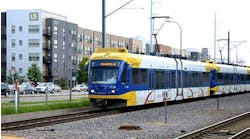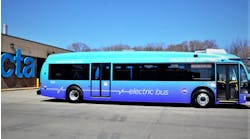Central Ohio Transit Authority officials say they see little downside in a planned switch to buses that run cheaper, quieter and cleaner on compressed natural gas.
They plan to buy natural gas-burning buses as early as 2013 -- new pumps must be installed first -- and they think federal grants will be available to cover much of the cost. The new buses cost more to buy but less to fuel and repair.
"We've tested a good number of alternative fuels," said Pat Stephens, COTA's vice president for operations. "We believe it offers us the best opportunity to be responsible in reducing our fuel costs and to be responsible environmentally."
Most buses now run on ultra-low-sulfur diesel, which has cost COTA an average of $3.10 per gallon this year. An equivalent amount of compressed natural gas costs $1.13.
COTA President and CEO Bill Lhota said the transit authority will continue to test hybrid buses that run on electricity and diesel fuel, but the compressed-natural-gas alternative looks more promising.
"It has a lot of things going for it," he said. "I could see a mix."
COTA has tested fuel alternatives in recent years in an effort to save money and reduce emissions. In 2007, the agency completed a federally mandated switch to the ultra-low-sulfur diesel but stopped buying a biodiesel blend when the cost got too high.
Six hybrids that hit the road in 2010 saved $3,600 a month on fuel, but they cost an extra $230,000 each.
Buses that burn compressed natural gas cost $40,000 more each but also require new fuel pumps and changes to maintenance facilities that would total $12.4 million. COTA officials said federal grants designed to steer agencies toward more-environmentally friendly fuels should pay most of that expense, as well.
Buses last about 12 years, so COTA will start buying natural-gas-burning buses as replacements. Stephens said the agency won't retrofit any of its nearly 300 diesel buses.
Sam Spofforth, executive director of Clean Fuels Ohio, a group that promotes alternative fuels, said vehicles that run on compressed natural gas have come down in price in recent years.
Natural gas is neither toxic nor carcinogenic, and it doesn't harm soil, surface water or groundwater. Clean Fuels Ohio encourages its use and is overseeing an $11 million federal grant to help convert fleets and install natural-gas fuel pumps.
Diesel has become cleaner, too, though, Spofforth said.
"Compressed natural gas used to be considerably better environmentally but not a good economic choice," he said. "Today, compressed natural gas is significantly better economically and marginally better environmentally."
The American Public Transportation Association estimates that 18.6 percent of the nation's buses are powered by compressed natural gas, liquefied natural gas or blends. More than 65 percent still run on diesel fuel.
The Metro Regional Transit Authority in Akron stopped buying buses using compressed natural gas in 2008 after pipelines and processing plants in the Gulf of Mexico were knocked out by Hurricanes Gustav and Ike.
Prices fell in 2009, though, and the agency resumed plans to convert its fleet. About half its buses run on compressed natural gas.
The extra costs are recouped after about four years of fuel savings, said Dean Harris, the Akron authority's director of finance.
Stephens said COTA's research found natural-gas prices to be less volatile than those of diesel fuel. Also, the U.S. produces lots of natural gas, including in Ohio.
Copyright 2008 LexisNexis, a division of Reed Elsevier Inc. All rights reserved.
Terms and Conditions | Privacy Policy


